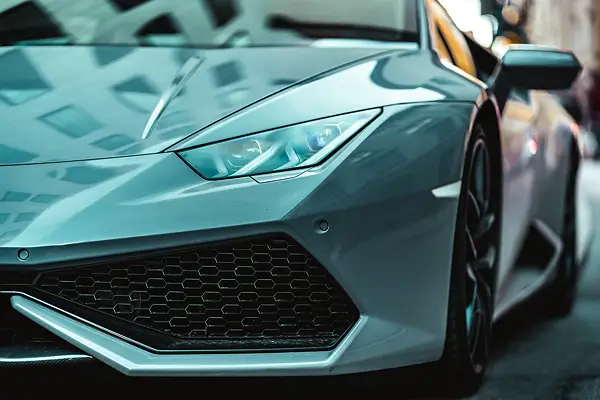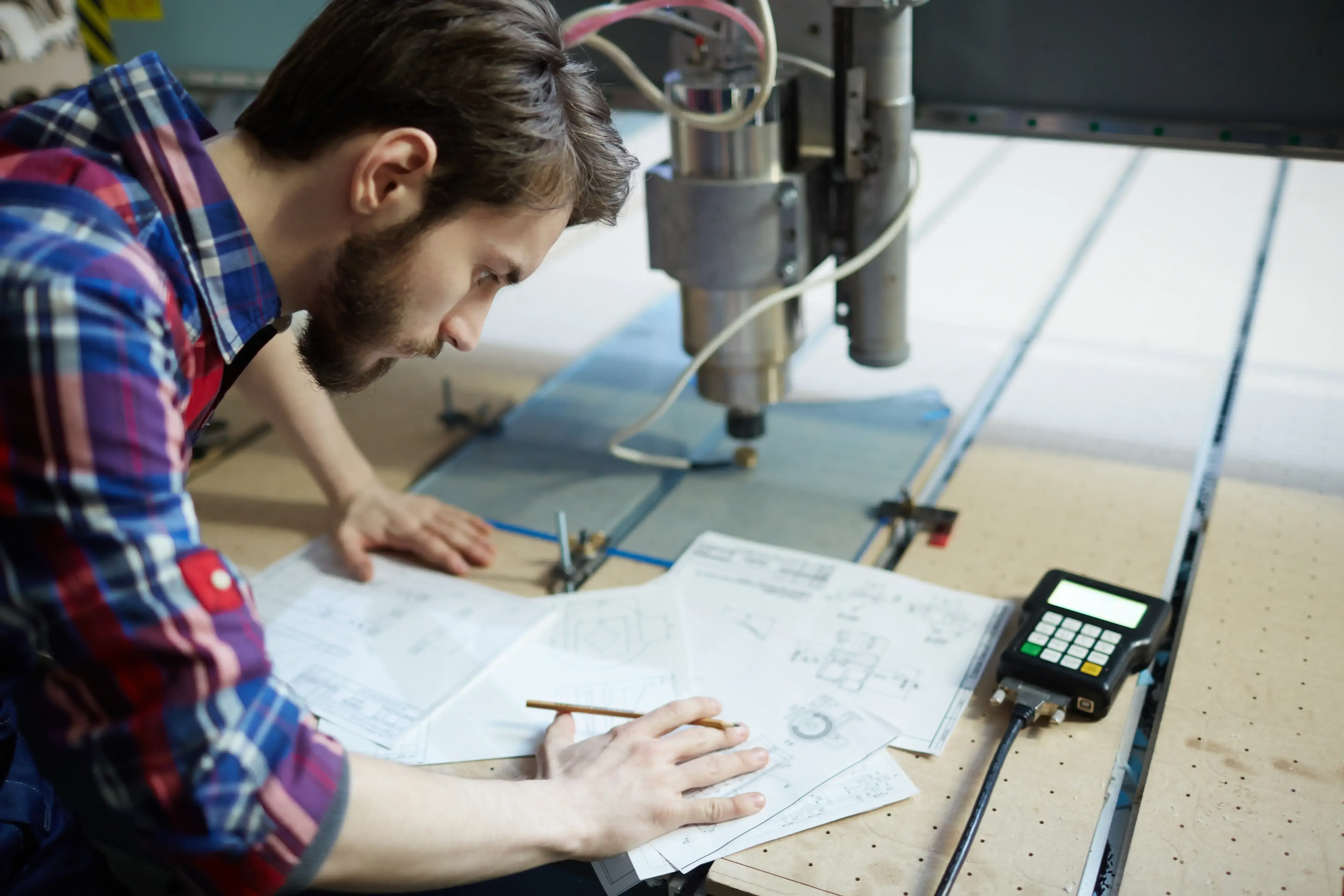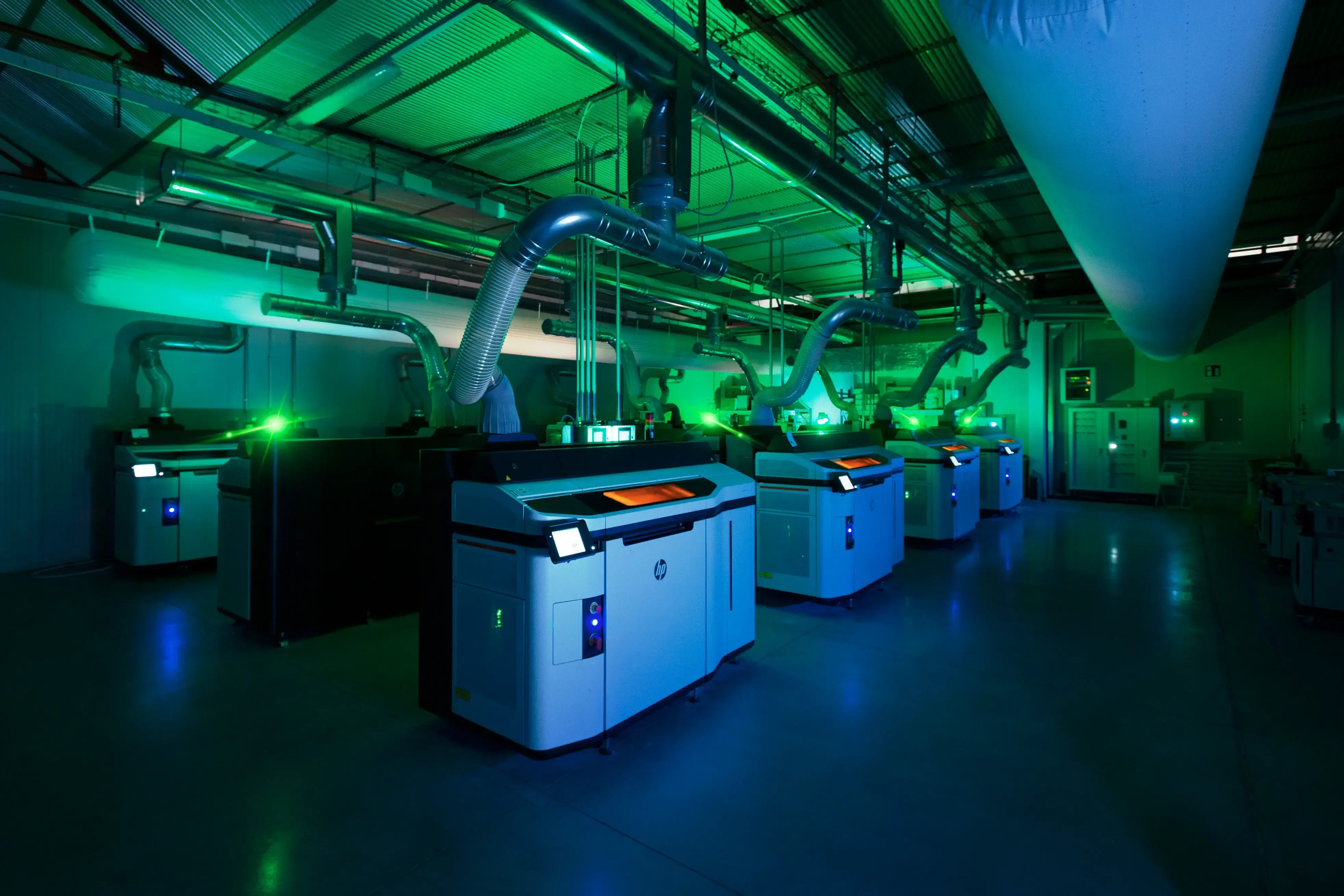2 min read
Topology optimisation in 3D Printing
The evolution of manufacturing technology has led to revolutionary design and manufacturing paradigms. Topology optimisation in 3D printing...

In the rapidly evolving world of automotive, 3D printing is becoming a key element in component design and production. Weerg, a leader in the 3D printing and CNC machining industry, is playing a pivotal role in this futuristic revolution, providing professionals with the means to create innovative cars.
One of the key advantages of 3D printing in the automotive sector is the ability to manufacture highly customised components optimised for specific applications. This technology enables the production of parts with complex geometries and an exceptionally high level of detail, which would be difficult to achieve using traditional manufacturing methods. As a result, it becomes possible to reduce the weight of certain structural elements without compromising their strength, thereby enhancing the overall efficiency of the vehicle.
This aspect is particularly relevant in motorsport, where every component must be designed to deliver maximum performance with minimal weight. In this sector, even a slight reduction in mass or a marginal improvement in aerodynamics can translate into a competitive advantage on the track. 3D printing facilitates the experimentation of innovative solutions, such as integrated cooling systems or optimised intake ducts, which can make a significant difference in achieving superior results.
Moreover, the speed at which prototypes can be developed and new solutions tested allows for much faster and more frequent design iterations compared to traditional production methodologies, such as moulds or dedicated tooling. This enables engineers to shorten design and testing times, making it easier to implement modifications on the go and fine-tune components in a precise and responsive manner. Additionally, the ability to manufacture required parts directly on-site significantly reduces supply chain lead times and costs, offering greater flexibility in stock management and increased production autonomy.

A notable example of 3D printing in motorsport is the Nose Cone, a crucial component of racing single-seaters. Manufactured using PA12 with MJF 5620 Pro technology, this element incorporates several critical functions: the safety cone, designed to absorb frontal impacts and enhance driver protection; the front wing, essential for managing airflow and maximising downforce; and the support pylons, which connect the nose to the vehicle’s chassis. The use of PA12 nylon ensures an optimal balance between mechanical strength, lightweight properties, and durability, making it an ideal material for this type of application.
Another area where 3D printing is making a difference is in the production of high-performance exhaust systems. Traditionally, these components are made from metal using manufacturing processes that are both time-consuming and costly. Thanks to 3D printing and advanced materials such as PPS GF, it is now possible to create high-performance exhausts with excellent thermal and mechanical resistance. PPS GF is a glass-fibre-reinforced polymer that offers superior rigidity and high-temperature resistance without the weight and complexity associated with metal alloys. The ability to design optimised shapes and manufacture exhaust ducts with advanced geometries in-house enhances gas flow efficiency and optimises engine performance.
Aerodynamic efficiency is a key factor in motorcycle racing, and 3D printing plays a vital role in the development of wing profiles for racing bikes. These components must be designed according to the specifications of each circuit, adapting to varying race conditions. MSLA technology allows for the creation of aerodynamic elements with extremely fine details and superior surface quality, making them ideal for wind tunnel testing and real-world track applications. The versatile resins used with this technology enable the rapid production of functional prototypes, which can be assessed and modified in a fraction of the time required by traditional methods. This iterative approach makes it possible to optimise design and maximise vehicle stability without sacrificing speed.
A prime example of Weerg's impact on the automotive industry is the project undertaken by Peter Franzen. The Finnish customer embarked on the ambitious task of rebuilding a Lamborghini Gallardo, a project that required the design and 3D printing of the front and rear headlights. Using Multi Jet Fusion (MJF) technology and Nylon PA12, Franzen achieved highly resistant and durable components, perfectly suited to motorsport requirements. However, Peter's innovation did not stop there. His Gallardo is not a typical Lamborghini, because it is fitted with a Mercedes AMG GT engine and the entire suspension of an Audi R8. Such extensive modifications made it almost impossible to replace the original parts, making online 3D printing services an unbeatable solution. Weerg was Peter's choice due to its excellent quotation and ordering system and competitive prices. With the PA12 material, he found the perfect balance between durability and chemical resistance, which is crucial for motorsport applications.


Another evidence of Weerg's contribution to the automotive industry is Chris's project. After losing a fan on his racing car, he decided to design and 3D print a custom replacement. Despite initial attempts on his own, the results were not satisfactory and led him to look for an online 3D printing service. Using Weerg's Multi Jet Fusion process, he achieved a custom design of high precision and durability. The nylon pieces were flexible enough to guarantee a perfect fit, as well as remaining strong enough to withstand the challenges of the track.


3D printing is significantly transforming the Formula 1 world, enabling greater customization and rapid production. In this highly competitive environment, where every detail matters, Weerg is at the forefront of using 3D printing to create lightweight, strong, and high-performance components. This optimization in design maximizes aerodynamics and enhances car efficiency. Rapid and precise production helps reduce manufacturing time and ensures availability of essential components for competitions. Materials like peek and other high-performance polymers are extensively used in this sector due to their satisfying mechanical properties, cost-effectiveness, and short production times. This choice results in high-quality parts delivered quickly, guaranteeing competitive racing cars. 3D printing is proving to be a key technology in improving racing car performance, offering an innovative and cost-effective solution for meeting the demands of the highly competitive Formula 1 environment.

In conclusion, 3D printing is undeniably revolutionizing the automotive industry in extraordinary ways. It is opening new perspectives, allowing for customized component creation, and optimizing vehicle performance. The customization, strength, and precision of 3D-printed parts are redefining design and production standards in the automotive world. Weerg, as a leader in 3D printing and CNC machining, plays a fundamental role in this futuristic transformation. Innovative projects like Peter Franzen's personalized reconstruction of a Lamborghini Gallardo and Chris's custom racing car components clearly demonstrate the added value of 3D printing in the automotive sector. With advanced technology and high-quality materials such as Nylon PA12 and Multi Jet Fusion (MJF), Weerg provides reliable and high-performance 3D printing solutions to meet the unique needs of the automotive industry, both in motorsport and Formula 1. With Weerg as a reliable partner, automotive professionals can count on reduced production times, competitive prices, and a wide range of design possibilities to create innovative and competitive vehicles.

2 min read
The evolution of manufacturing technology has led to revolutionary design and manufacturing paradigms. Topology optimisation in 3D printing...

3 min read
Medicine has always been pioneering and cutting-edge. Starting in the 1990s, it began to move towards 3D printing, confirming its predisposition for...

1 min read
In the modern landscape of manufacturing, 3D printing technology is emerging as a revolutionary force. With a wide range of techniques available, it...